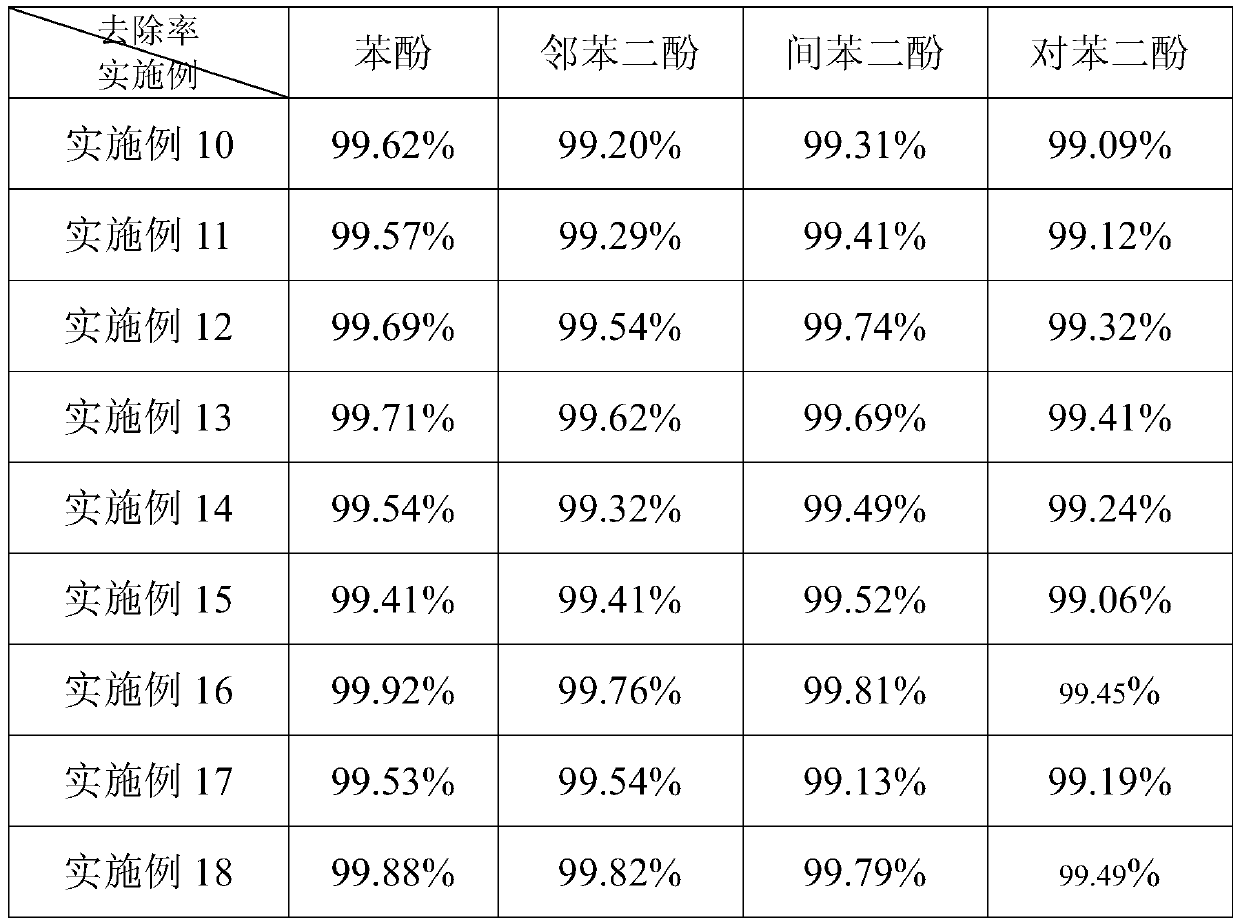A compound extractant for extracting dihydric phenols and its preparation method and application
A composite extractant and dihydric phenol technology, applied in chemical instruments and methods, extraction water/sewage treatment, water pollutants, etc., can solve the problems of secondary pollution, high solubility and high energy consumption, and achieve improved treatment effect, Widen the range of options, avoid losses and the effect of secondary pollution
- Summary
- Abstract
- Description
- Claims
- Application Information
AI Technical Summary
Problems solved by technology
Method used
Image
Examples
Embodiment 1
[0047] The extractant used for treating dihydric phenol in phenol-containing wastewater contains the following components by volume fraction: 70% of sec-octylone, 20% of ethyl acetate, and 10% of n-butanol. The prepared extractant and the prepared simulated wastewater were mixed at a volume ratio of 1:1 for 15 minutes, and then left to stand for 30 minutes to obtain the extract phase and the raffinate phase.
[0048] After testing, the content of phenol in the raffinate phase of gained is respectively: phenol is 259.2mg / L, and catechol is 97.5mg / L, and resorcinol is 89.2mg / L, and hydroquinone is 145.7mg / L. From this, it can be calculated that the wastewater containing phenol can be removed by one extraction: 93.52% for phenol, 90.25% for catechol, 91.08% for resorcinol, and 85.43% for hydroquinone.
Embodiment 2
[0050] The extractant used for treating dihydric phenol in phenol-containing wastewater contains the following components by volume fraction: 75% of sec-octylone, 15% of ethyl acetate, and 10% of n-butanol. The prepared extractant and the prepared simulated wastewater were mixed at a volume ratio of 1:1 for 15 minutes, and then left to stand for 30 minutes to obtain the extract phase and the raffinate phase.
[0051] After testing, the content of phenol in the raffinate phase of the gained is respectively: phenol is 237.6mg / L, catechol is 94.3mg / L, resorcinol is 81.0mg / L, hydroquinone is 136.9mg / L. From this, it can be calculated that the wastewater containing phenol can be removed by one extraction: 94.06% for phenol, 90.57% for catechol, 91.90% for resorcinol, and 86.31% for hydroquinone.
Embodiment 3
[0053] The extractant used for treating dihydric phenol in phenol-containing wastewater contains the following components by volume fraction: 80% of sec-octyl ketone, 15% of ethyl acetate, and 5% of n-butanol. The prepared extractant and the prepared simulated wastewater were mixed at a volume ratio of 1:1 for 15 minutes, and then left to stand for 30 minutes to obtain the extract phase and the raffinate phase.
[0054] After testing, the content of phenol in the raffinate phase of gained is respectively: phenol is 220mg / L, and catechol is 86.8mg / L, and resorcinol is 74.2mg / L, and hydroquinone is 115.8mg / L. From this, it can be calculated that the wastewater containing phenol can be removed by one extraction: 94.5% for phenol, 91.32% for catechol, 92.58% for resorcinol, and 88.42% for hydroquinone.
PUM
 Login to View More
Login to View More Abstract
Description
Claims
Application Information
 Login to View More
Login to View More - R&D
- Intellectual Property
- Life Sciences
- Materials
- Tech Scout
- Unparalleled Data Quality
- Higher Quality Content
- 60% Fewer Hallucinations
Browse by: Latest US Patents, China's latest patents, Technical Efficacy Thesaurus, Application Domain, Technology Topic, Popular Technical Reports.
© 2025 PatSnap. All rights reserved.Legal|Privacy policy|Modern Slavery Act Transparency Statement|Sitemap|About US| Contact US: help@patsnap.com


